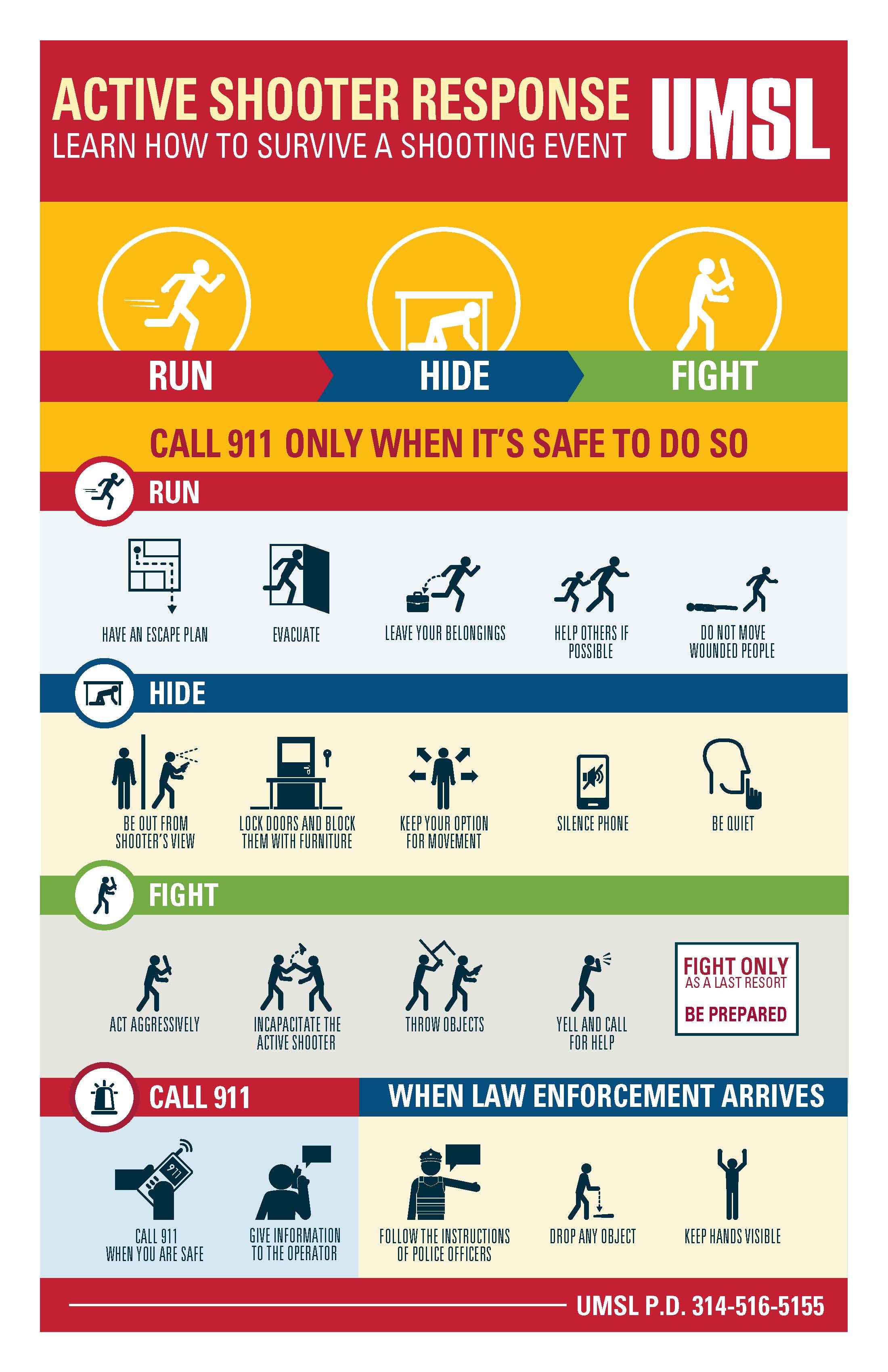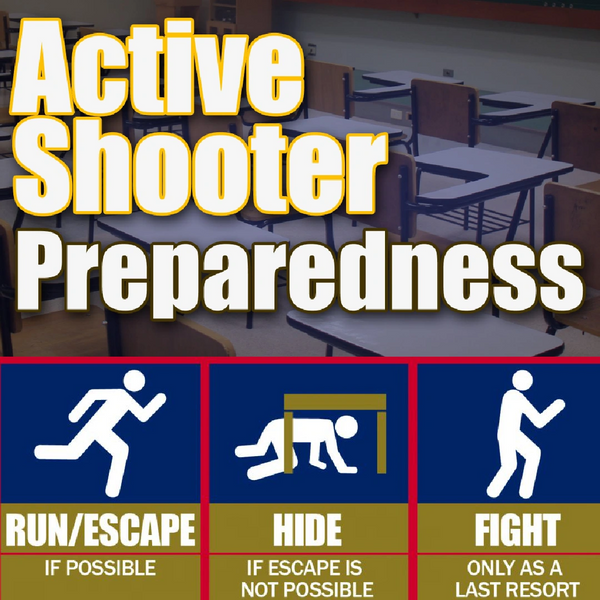The Relevance of Active Shooter Training in High-Risk Atmospheres
The Relevance of Active Shooter Training in High-Risk Atmospheres
Blog Article
Implementing Energetic Shooter Training: Finest Practices for Producing a Safe and Prepared Area Setting
As neighborhoods challenge the distressing fact of energetic shooter occurrences, the implementation of detailed training programs becomes imperative. A successful technique pivots on not just the development of tailored educational programs that attend to local dangers yet also the involvement of diverse stakeholders. By employing a selection of training approaches, areas can make sure that all participants are equipped with crucial skills. The obstacle exists in preserving an adaptive framework that progresses with emerging hazards. What are the crucial aspects that can transform a typical training program into a robust model for area resilience?

Recognizing the Need for Educating
In a period marked by raising occurrences of physical violence in public areas, recognizing the demand for energetic shooter training has actually never been much more crucial. Detailed training efforts can equip participants with the understanding and skills to respond emphatically.
Training fosters a sense of empowerment and preparedness, allowing individuals to feel even more secure in their surroundings. The advantages of energetic shooter training prolong past instant feedback; they include boosting communication protocols and enhancing total safety and security measures within companies.
Key Components of Effective Programs
Reliable active shooter training programs incorporate several vital elements that boost preparedness and response capabilities. Initially, comprehensive curriculum development is vital, ensuring that training web content matters, evidence-based, and tailored to the details requirements of the organization or neighborhood. This consists of understanding the characteristics of energetic shooter cases and the mental influence on people entailed.
Second, reasonable training scenarios ought to be employed to simulate possible situations, enabling individuals to practice decision-making and reaction techniques in a controlled atmosphere. These drills assist in muscular tissue memory and build confidence amongst individuals.
Third, a concentrate on communication procedures is critical. Developing clear lines of communication amongst regulation enforcement, emergency situation responders, and individuals makes sure coordinated feedbacks throughout an incident. Normal updates and refresher training courses help keep communication pathways clear and efficient.
Fourth, recurring examination and comments mechanisms must be integrated into the training program - active shooter training. Analyzing the effectiveness of training through participant feedback and performance metrics permits continual enhancement
Lastly, promoting a culture of security and readiness within the area encourages alertness and proactive procedures, making certain that people are not just trained yet also engaged in maintaining a secure atmosphere.
Engaging Neighborhood Stakeholders

To efficiently involve these stakeholders, it is necessary to communicate the goals and benefits of the training. Hosting educational sessions can help clarify the training's purpose, address concerns, and lay out the functions each stakeholder may play. Producing a stakeholder advising committee can help with continuous discussion, permitting for diverse viewpoints and understandings to be incorporated right into the training program.
Building relationships with neighborhood leaders and special info companies is also crucial. Their assistance can boost outreach efforts, increase involvement, and make certain that training is customized to the distinct requirements of the area. Furthermore, stakeholders can aid in sharing info and sources, reinforcing the message of safety and security and readiness.
Eventually, engaging area stakeholders not only reinforces the training campaign but additionally grows a sense of ownership amongst locals, causing a more durable and enlightened area capable of responding effectively to prospective hazards.
Training Shipment Techniques
Making use of a variety of training distribution techniques is necessary to fit the diverse knowing styles and requirements of individuals in energetic shooter training programs (active shooter training). Efficient training can take numerous types, consisting of lectures, hands-on simulations, on-line components, and interactive workshops. Each approach serves a special objective and can enhance the general discovering experience

On-line modules offer Related Site adaptability and availability, making it possible for individuals to discover at their own pace. These can include video clips, quizzes, and discussions to determine understanding. Interactive workshops urge seminar and analytic, advertising team effort and communication abilities.
Integrating a blended method that combines these methods not only enhances the training experience however likewise makes certain that individuals are much better prepared to react effectively in the event of an energetic shooter scenario (active shooter training). By addressing various learning preferences, companies can develop an extra enlightened and responsive community
Continual Evaluation and Improvement
Regular evaluation and improvement of energetic shooter training programs are vital to maintaining their importance and efficiency. As hazards develop, so must the techniques and approaches used in training. Constant evaluation ensures that training web content mirrors the newest knowledge on energetic shooter incidents, incorporating lessons picked up from current events and adjusting for arising fads.
To facilitate this procedure, organizations must develop responses mechanisms that include individual evaluations, specialist reviews, and occurrence debriefs. Gathering information on individual efficiency during drills and exercises is necessary, as it highlights locations requiring improvement and notifies future training sessions. In addition, involving with police and emergency -responders can give beneficial understandings into the functionality and applicability of training protocols.
Frequently scheduled reviews of training materials and strategies should be mandated, promoting a setting of advancement and versatility. Organizations needs to also motivate a culture of recurring knowing, where staff members really feel equipped to suggest adjustments based find here on their experiences. By devoting to constant assessment and improvement, organizations not only boost the performance of their active shooter training programs yet likewise enhance their general commitment to security and preparedness within the community.
Verdict
In verdict, reliable execution of energetic shooter training demands a comprehensive technique that prioritizes area interaction and practical simulations. Eventually, a dedication to continuous training and improvement grows a culture of alertness and readiness, guaranteeing a safer setting for all community members.
Report this page